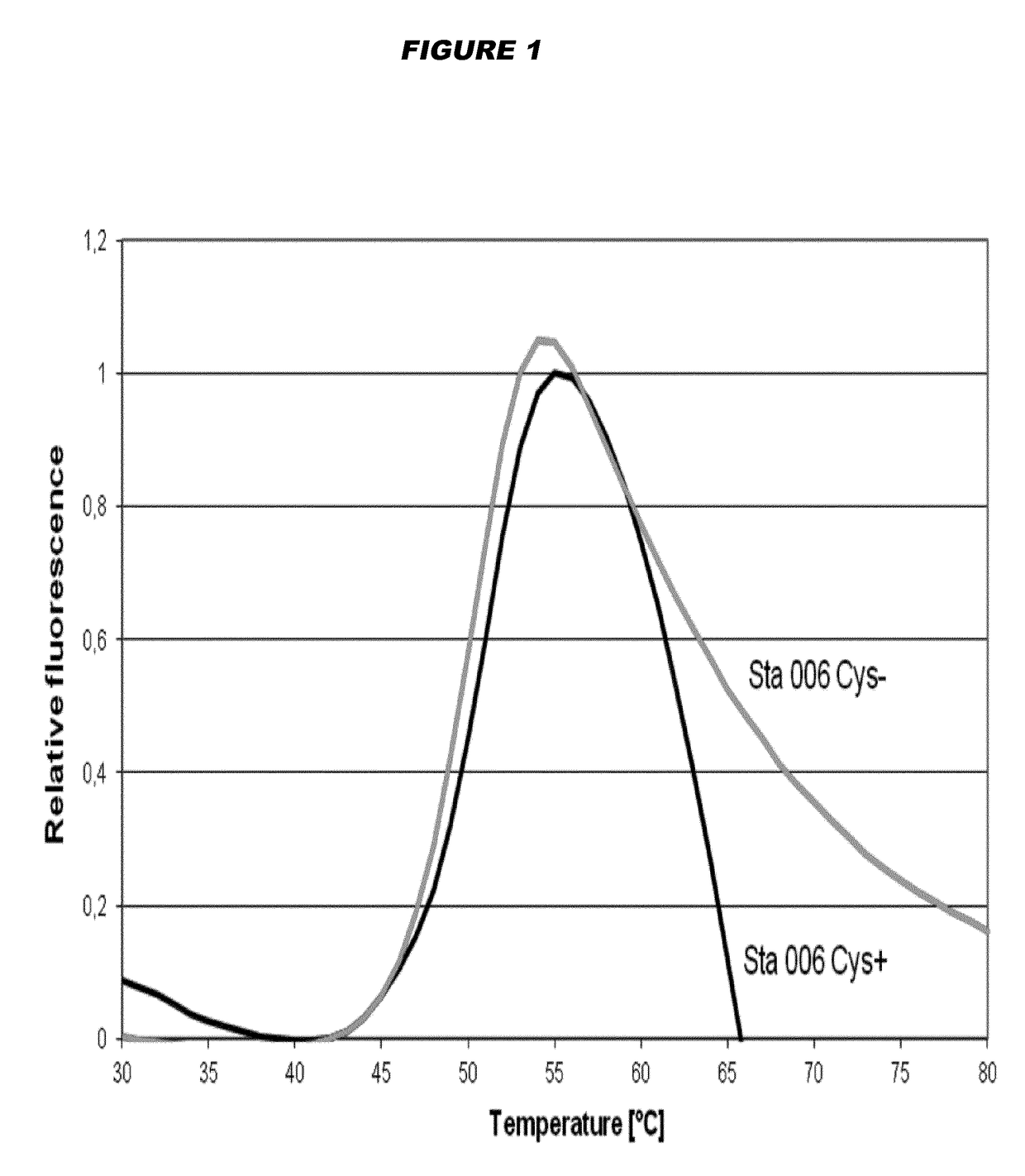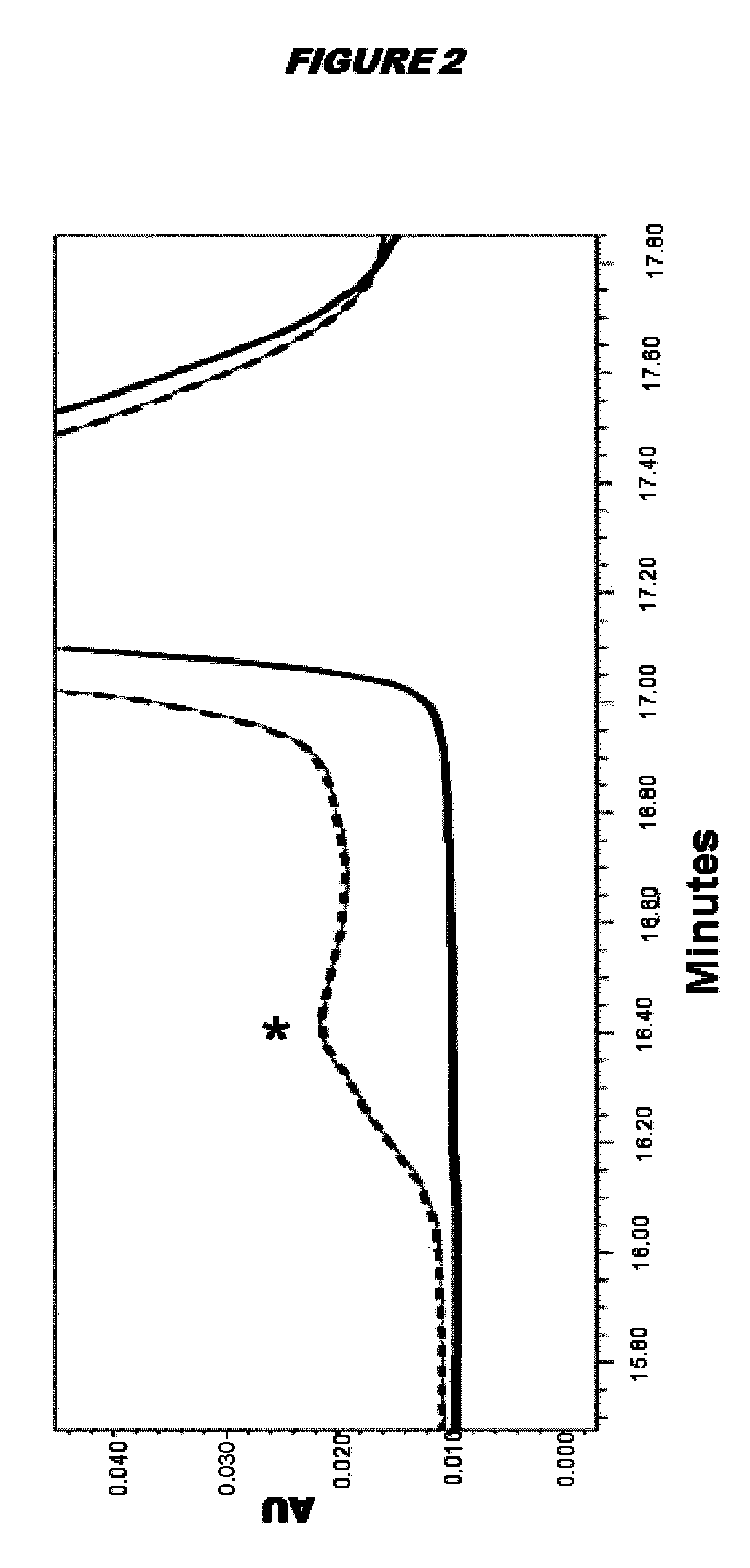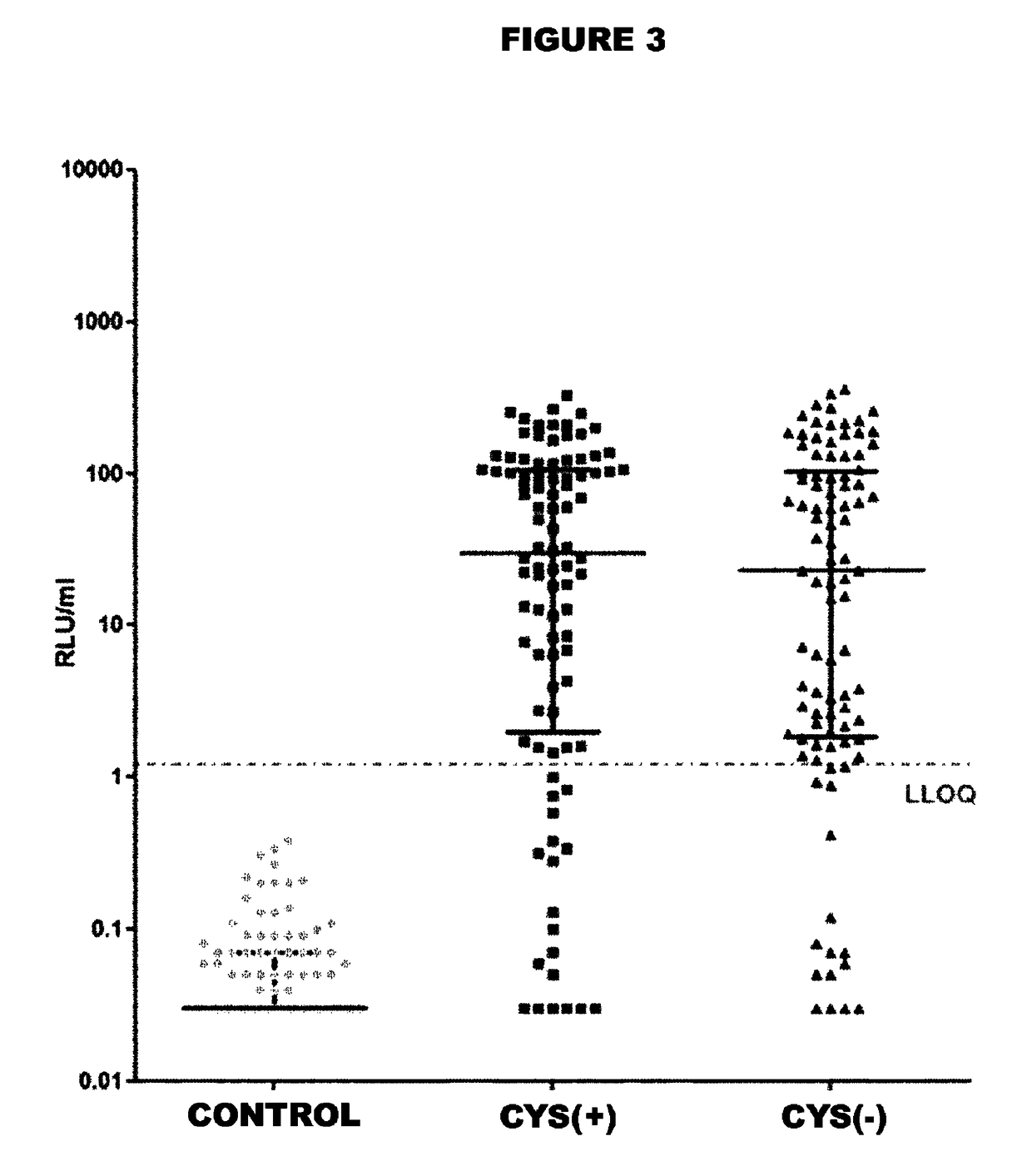Stabilised proteins for immunising against Staphylococcus aureus
a technology of stabilised proteins and staphylococcus aureus, which is applied in the field of immunogenic compositions, can solve the problems of unstable compositions containing covalent dimers, and achieve the effects of preventing oligomerization of antigens, enhancing antigen stability, and enhancing antigen stability
- Summary
- Abstract
- Description
- Claims
- Application Information
AI Technical Summary
Benefits of technology
Problems solved by technology
Method used
Image
Examples
Embodiment Construction
[0183]The Sta006 Cys(+) antigen used in the experiments described below is represented by SEQ ID NO: 3, and the Sta006 Cys(−) antigen is represented by SEQ ID NO: 6. Both antigens were recombinant proteins purified from E. coli.
[0184]Thermal stability of the Sta006 cysteine-containing Cys(+) antigen was compared to the Sta006 cystine-deficient Cys(−) antigen by Differential Scanning Fluorimetry (DSF). Samples containing antigen (10 μM in PBS) were heated under controlled conditions with a ramp rate of 1° C. / min in Strategen Mx3000p Real Time PCR instrument. The dye SyproOrange 5× was used, and the changes in fluorescence were monitored. Assays were performed over a temperature range of 10-100° C.
[0185]FIG. 1 reports the melting curves of the antigens tested. It is shown that the peak for the Cys(−) antigen is shifted slightly to the top and left compared to the Cys(+) antigen. Melting temperatures (Tm) were determined by fitting the first derivative of the...
PUM
| Property | Measurement | Unit |
|---|---|---|
| osmolality | aaaaa | aaaaa |
| osmolality | aaaaa | aaaaa |
| osmolality | aaaaa | aaaaa |
Abstract
Description
Claims
Application Information
 Login to View More
Login to View More - R&D
- Intellectual Property
- Life Sciences
- Materials
- Tech Scout
- Unparalleled Data Quality
- Higher Quality Content
- 60% Fewer Hallucinations
Browse by: Latest US Patents, China's latest patents, Technical Efficacy Thesaurus, Application Domain, Technology Topic, Popular Technical Reports.
© 2025 PatSnap. All rights reserved.Legal|Privacy policy|Modern Slavery Act Transparency Statement|Sitemap|About US| Contact US: help@patsnap.com



